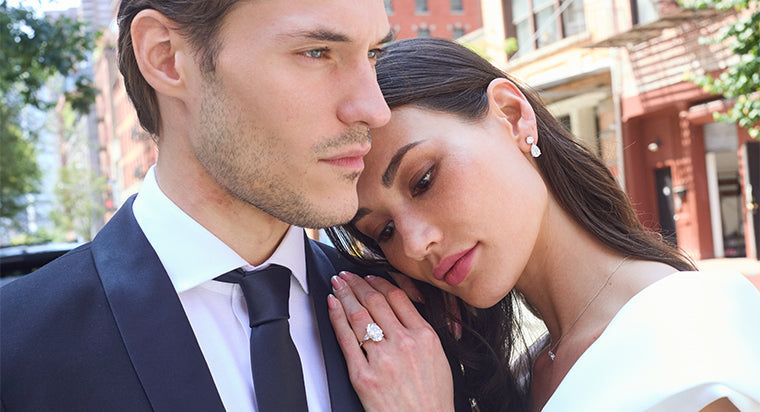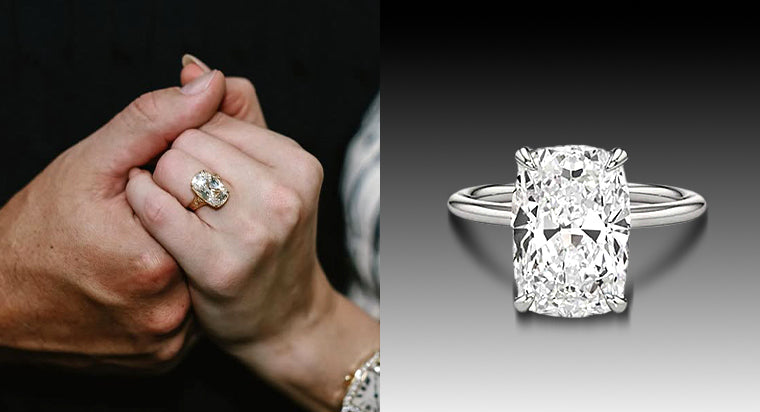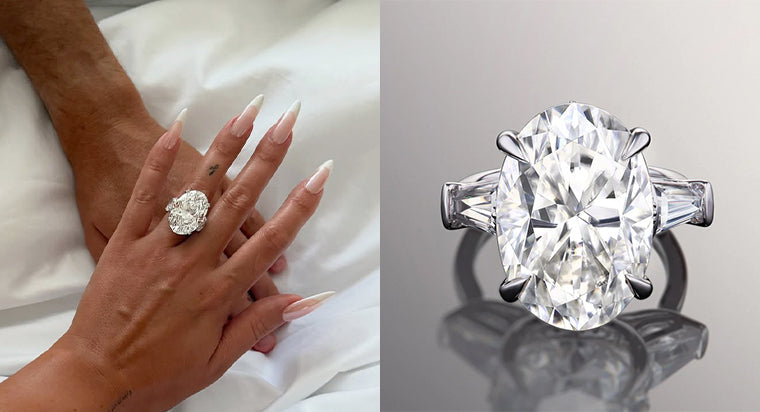Diamond Setting Guide

It doesn’t have to be so scary! With a little information and education, anyone can make the perfect custom ring, and learn a little something about setting those precious diamonds.
What is a Loose Diamond
A loose diamond is – you guessed it – diamonds that can be purchased loose, or not preset in jewelry pieces. These diamonds have already been inspected for quality, and graded and certified according to their characteristics by the GIA (the Gemological Institute of America). All the legwork has been done for the customer, so all you have to do is choose the diamond that’s perfect for the custom ring you have in mind, and your first step to creating that unique engagement ring is complete!
What Holds a Diamond in its Place in Rings
Have you ever wondered how diamonds sit so perfectly and snugly in place in the gorgeous rings you see in jewelry stores? It’s all in the collet (more commonly known as the “setting”) that secures the diamond and ensures that the diamond doesn’t come loose and rattle around at the top of your ring. That’s why it’s so important to get the proper setting for the diamond you’ve selected for your custom ring before the ring’s completion.
What are the Metal Options for my Diamond Setting
In many cases, you must choose a type of metal for your engagement ring before you make a definitive decision on the setting, although some people already have an idea for the entire ring in mind, and are shopping for the lowest-price metals, with no particular preference. Should you need help deciding on your ring metal, here are some ideas (all recommendations below refer to the standard 14-18kt in their respective metal types):
Gold Ring Metals
-
Yellow gold- the most common jewelry and engagement ring metal, and among the most durable. Yellow gold does not fade, rust, or develop unsightly blemishes and corrosion spots, like some of the softer and less pure metals. It also provides one of the best and most secure ring setting fits. It is a great choice of ring metal for women with very active lifestyles or jobs that require a great deal of work with their hands. -
White gold- the second most common metals used for engagement rings. White gold is a combination of manganese, zinc, palladium (a strong, durable white metal), tin, copper, and more than 50% yellow gold. Because of its yellow gold and palladium concentrations, it is among the strongest metals on the market, and is unbreakable, if well-made and the metal ratios are pure and perfect. -
Rose gold- less common than its other gold siblings, but often selected because of its pinkish, rosy color. Unlike yellow and white golds, it can become dull and lifeless, but a quick polish will have it looking good as new in no time.
White Metals (other than white gold)

What Types of Center Settings can I use
Other helpful tips to consider before setting diamonds
- Don’t forget to select a style (solitaire, tri-stone, side stone, halo, etc.)
- Mind her skin sensitivity. If she seems to react to jewelry or metal materials containing nickel, choose a ring metal with little or none of the irritating component.
- Try to decide on a diamond cut before settling on a setting. Some settings are more awkward for certain diamond cuts, and having the cut in mind beforehand can save a lot of time and redesign work.
- Diamond color and clarity. If the loose diamond you choose has a tinge of color that you didn’t want, or didn’t notice was there at first, consider setting it in a colored gold band. The color will bring out the white in the diamond and camouflage the faint underlying hue.
FAQs
What is a loose diamond?
A loose diamond is a diamond that can be purchased loose or is not pre-set on any piece of jewelry.
Which metal is the best for my diamond setting?
This would depend on your taste and budget. However, yellow gold, white gold, and rose gold in 14kt or 18kt would be good choices as they are durable and corrosion-free, which means they are suitable for everyday wear. Platinum is also an excellent choice as it is hypoallergenic and highly durable, but it is more expensive than most metals.
What is the most popular setting for an engagement ring?
Four-prong, six-prong, pave and channel are some of the most popular setting options for an engagement ring.
Does the halo setting make the ring look bigger?
Yes, this particular setting can make your ring look bigger thanks to the halo of smaller accent diamonds that surround the center stone and offer extra brilliance.
What is the best jewelry metal for sensitive skin?
Platinum is the best jewelry for sensitive skin since it is hypoallergenic, and its purity levels ensure that it will not irritate the skin.









